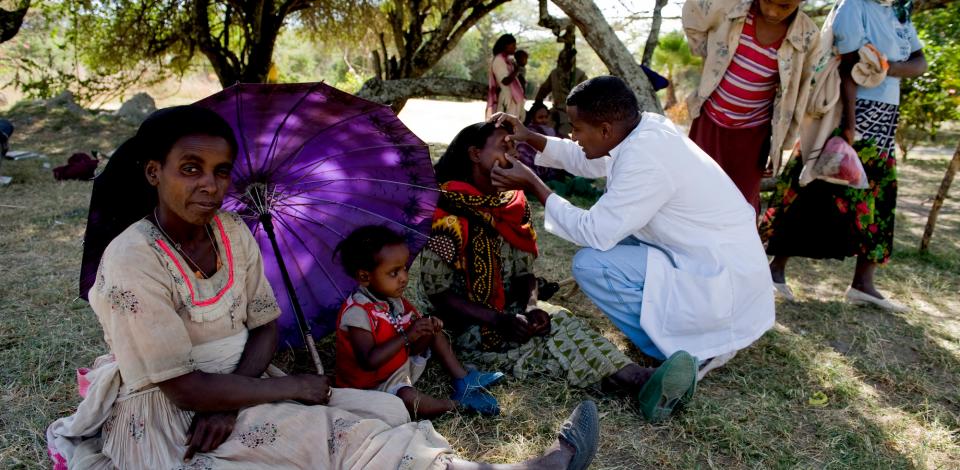
Introduction
Eye care is critically needed in every facet and stage of our lives. Eyes are the most dominant of the five senses and are integral to social interactions and face-to-face communication where information is conveyed through non-verbal cues. A number NTDs can cause vision impairment, which can lead to personal and financial hardships. In a global society built on the ability to see,lack of eye care has far-reaching consequences for individuals, their families and carers. Some of the consequences of NTDs can however be mitigated by timely access to quality eye care.
For which NTDs is this relevant
The best known are trachoma, onchocerciasis and leprosy.
Neglected tropical diseases are a major cause of preventable blindness. They are most prevalent amongst people in the poorest parts of the world. The people living in remote, rural areas, urban slums, or conflict zones are most at risk. Integrated people-centred eye care (IPCEC) can help address the significant eye care challenges leading to preventable blindness due to NTD’s. IPCEC adopts a health system perspective with four strategies:
- Engaging and empowering people and communities;
- Reorienting the model of care based on a strong primary care;
- Coordinating services within and across sectors; and
- Creating an enabling environment, specifically the inclusion of eye care in national health strategic plans, the integration of relevant eye care relevant data within health information systems, and the planning of the eye care workforce according to population needs.
Promoting eye care will play a major role in preventable blindness caused by NTDs.
Vision-related quality of life (VRQoL) tool
Visual impairment is a global public health problem. With increasing numbers of elderly persons in almost all populations, the public health significance of visual impairment is increasing. NTDs contribute significantly to the prevalence of people living with visual impairment or blindness. As an important outcome of programs aimed at improving the quality of life of persons with visual impairment, a specific instrument like the vision-related quality of life (VRQoL) tool can be helpful. This instrument can be used in NTDs such as trachoma, onchocerciasis and leprosy. The more common and validated instruments, such as WHO/PBD-VF20 and WHOQOL-BREF questionnaires, can also be used to measure the VRQoL. Although there is little research on the effect of trachoma on quality of life, this is an example of a case-control study that has measured the VRQoL in Ethiopia in 2015.

 Infolep
Infolep